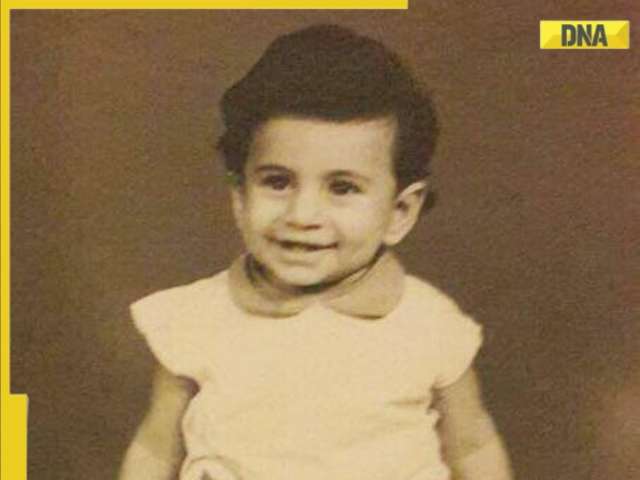Patients suffering from Rift Valley Fever usually experience weakness, fever, back pain, dizziness, and extreme weight loss at the onset of disease.
Rift Valley Fever (RVF) is an acute, fever-causing viral disease that affects domestic animals like cow, buffalo, sheep, goats and camels and in some cases also affects humans. RVF is most commonly associated with mosquito-borne epidemics during unusually heavy rainfall, particularly in the eastern and southern regions of Africa.
The fever-causing viral disease is inflicted by the RVF virus. The disease was first reported among livestock by veterinary officers in Kenya in the early 1900s. Recently, it has been found that the Rift Valley Fever (RVF) virus spreads by mosquitoes and further enters the human cells through a protein.
Read | What is Rift Valley Fever virus that is spreading from animals to humans
The virus is borne by mosquitoes and is spread by the insect's bite. Anyone who is exposed to infected mosquitoes can get RVF. However, more commonly, people are infected after exposure to blood, body fluids and tissues of infected animals. The symptoms usually appear two to six days after the infection. RVF virus can cause several different disease syndromes.
What are the symptoms of Rift Valley Fever?
1. Those infected with RVF typically have either no symptoms or a mild illness associated with fever and liver abnormalities.
2. Patients usually experience fever, generalised weakness, back pain, dizziness, and extreme weight loss at the onset of disease.
3. Symptoms also include intolerance to light (photophobia), muscle pain, loss of appetite and prostration in humans.
4. Typically, patients infected with Rift Valley Fever recover within two days to one week after onset of the illness.
5. However, 8-10% of infected people can develop more serious forms of the illness including Hemorrhagic and Encephalitis.
6. Hemorrhagic fever occurs in less than 1% patients and may lead to shock, jaundice, and bleeding from gums, skin and nose.
7. The fatality rate for those who develop hemorrhagic fever approaches 50%.
8. Encephalitis occurs in less than 1% people and results in inflammation of brain, which can lead to headaches, coma or seizures.
9. Lesions on the eyes may occur one to three weeks after onset of initial symptoms along with blurred and decreased vision.
10. Lesions disappear after 10 to 12 weeks. 50% of the patients who experience ocular disease will have permanent vision loss.
(With Inputs from Health journals)
![submenu-img]() Ganesh Chaturthi 2024 shubh muhurat: Check city wise puja timings, visarjan date, and bhog for Ganpati Bappa
Ganesh Chaturthi 2024 shubh muhurat: Check city wise puja timings, visarjan date, and bhog for Ganpati Bappa![submenu-img]() 'Leaders in Delhi never liked me…’ Omar Abdullah alleges poll 'conspiracy'
'Leaders in Delhi never liked me…’ Omar Abdullah alleges poll 'conspiracy'![submenu-img]() Boney Kapoor announces new film, its title has a Mr India connect: 'Probably by December we...'
Boney Kapoor announces new film, its title has a Mr India connect: 'Probably by December we...'![submenu-img]() Meet actress, who worked for 17 hours straight on toxic sets, her mental health was affected, left industry, is now...
Meet actress, who worked for 17 hours straight on toxic sets, her mental health was affected, left industry, is now...![submenu-img]() Over 200 Patients celebrate freedom from diabetes in Madhavbaug's nationwide campaign 'Azadi Diabetes Se'
Over 200 Patients celebrate freedom from diabetes in Madhavbaug's nationwide campaign 'Azadi Diabetes Se'![submenu-img]() Breaking News: मध्य प्रदेश के Jabalpur में बड़ा रेल हादसा, सोमनाथ एक्सप्रेस के 2 डिब्बे पटरी से उतरे
Breaking News: मध्य प्रदेश के Jabalpur में बड़ा रेल हादसा, सोमनाथ एक्सप्रेस के 2 डिब्बे पटरी से उतरे ![submenu-img]() 'नीतीश तीसरी बार नहीं करेंगे ये गलती', बिहार CM को लेकर ऐसा क्यों बोले जीतन राम मांझी
'नीतीश तीसरी बार नहीं करेंगे ये गलती', बिहार CM को लेकर ऐसा क्यों बोले जीतन राम मांझी![submenu-img]() Happy Ganesh Chaturthi 2024: 'लड्डू जिनका भोग है मूषक है सवारी....' यहां से शानदार मैसेज भेज सबको दें गणेश चतुर्थी की बधाई
Happy Ganesh Chaturthi 2024: 'लड्डू जिनका भोग है मूषक है सवारी....' यहां से शानदार मैसेज भेज सबको दें गणेश चतुर्थी की बधाई![submenu-img]() Haryana Assembly Election 2024: हरियाणा में कांग्रेस प्रत्याशियों की पहली लिस्ट जारी, इस सीट से चुनावी मैदान में उतरी विनेश फोगाट
Haryana Assembly Election 2024: हरियाणा में कांग्रेस प्रत्याशियों की पहली लिस्ट जारी, इस सीट से चुनावी मैदान में उतरी विनेश फोगाट![submenu-img]() Petrol-Diesel Price Today: पंप पर आज इस रेट में मिलेगा पेट्रोल-डीजल, �यहां चेक करें ताजा दाम
Petrol-Diesel Price Today: पंप पर आज इस रेट में मिलेगा पेट्रोल-डीजल, �यहां चेक करें ताजा दाम ![submenu-img]() DNA Auto Awards 2024: Maruti Suzuki Swift nominated for ‘CAR OF THE YEAR’; check price, features
DNA Auto Awards 2024: Maruti Suzuki Swift nominated for ‘CAR OF THE YEAR’; check price, features![submenu-img]() DNA Auto Awards 2024: Hyundai Alcazar Facelift nominated for ‘CAR OF THE YEAR’; check details
DNA Auto Awards 2024: Hyundai Alcazar Facelift nominated for ‘CAR OF THE YEAR’; check details![submenu-img]() Hyundai Creta Knight Edition launched in India: Check price, features, design
Hyundai Creta Knight Edition launched in India: Check price, features, design![submenu-img]() DNA Auto Awards 2024: Citroen Basalt nominated for ‘CAR OF THE YEAR’; check price, features
DNA Auto Awards 2024: Citroen Basalt nominated for ‘CAR OF THE YEAR’; check price, features![submenu-img]() DNA Auto Awards 2024: Tata Curvv nominated for ‘CAR OF THE YEAR’; check price, features
DNA Auto Awards 2024: Tata Curvv nominated for ‘CAR OF THE YEAR’; check price, features![submenu-img]() UPSC topper IAS Shruti Sharma's marksheet goes viral on social media, check her scores in different subjects
UPSC topper IAS Shruti Sharma's marksheet goes viral on social media, check her scores in different subjects![submenu-img]() Meet man, who lost his mother in childhood, worked as milk seller, cracked NEET exam with AIR...
Meet man, who lost his mother in childhood, worked as milk seller, cracked NEET exam with AIR...![submenu-img]() Meet man who failed 35 exams, cracked UPSC exam twice, first became IPS then quit due to...
Meet man who failed 35 exams, cracked UPSC exam twice, first became IPS then quit due to...![submenu-img]() Meet man, who was forced into child marriage at 11, cracked NEET exam with AIR...
Meet man, who was forced into child marriage at 11, cracked NEET exam with AIR...![submenu-img]() Meet woman who cracked UPSC exam in first attempt without coaching at 22, got AIR 31, she is now posted as…
Meet woman who cracked UPSC exam in first attempt without coaching at 22, got AIR 31, she is now posted as…![submenu-img]() Mumbai: Fire Breaks Out At Times Tower In Mumbai, 9 Fire Units Deployed
Mumbai: Fire Breaks Out At Times Tower In Mumbai, 9 Fire Units Deployed![submenu-img]() 'Dharavi Project Is About Restoring Dignity...', Says Gautam Adani | Dharavi Redevelopment Project
'Dharavi Project Is About Restoring Dignity...', Says Gautam Adani | Dharavi Redevelopment Project![submenu-img]() Kolkata Doctor Case: CBI Visits RG Kar, Seizes Documents On Funds Used During Sandip Ghosh’s Tenure
Kolkata Doctor Case: CBI Visits RG Kar, Seizes Documents On Funds Used During Sandip Ghosh’s Tenure![submenu-img]() Giriraj Singh Attacked: Union Minister Giriraj Singh Assaulted In Begusarai, Bihar; Accused Arrested
Giriraj Singh Attacked: Union Minister Giriraj Singh Assaulted In Begusarai, Bihar; Accused Arrested![submenu-img]() Haryana Assembly Election 2024: Haryana Assembly Election Date Changed, Check Details Here
Haryana Assembly Election 2024: Haryana Assembly Election Date Changed, Check Details Here![submenu-img]() Mukesh Ambani set to challenge Adani, ITC with his Rs 3900 crore plan for...
Mukesh Ambani set to challenge Adani, ITC with his Rs 3900 crore plan for...![submenu-img]() NPCI launches 'UPI circle', check what it is and how it works
NPCI launches 'UPI circle', check what it is and how it works![submenu-img]() Mukesh Ambani's Reliance Jio to give tough competition to BSNL with this plan, it offers 5G data at just Rs...
Mukesh Ambani's Reliance Jio to give tough competition to BSNL with this plan, it offers 5G data at just Rs...![submenu-img]() This company repays Rs 20000 crore debt for... and it has a Ratan Tata connection
This company repays Rs 20000 crore debt for... and it has a Ratan Tata connection![submenu-img]() Meet woman, billionaire's daughter, who studied in London, now leads Rs 1124 crore company as...
Meet woman, billionaire's daughter, who studied in London, now leads Rs 1124 crore company as...![submenu-img]() From Cristiano Ronaldo to Virat Kohli: List of highest-paid athletes in last 12 months
From Cristiano Ronaldo to Virat Kohli: List of highest-paid athletes in last 12 months![submenu-img]() Meet actor who worked as waiter, sold tea, namkeen for 14 years, debuted in Bollywood at 42; now his net worth is...
Meet actor who worked as waiter, sold tea, namkeen for 14 years, debuted in Bollywood at 42; now his net worth is...![submenu-img]() Parents-to-be Deepika Padukone, Ranveer Singh seek blessings at Siddhivinayak with families days before baby's arrival
Parents-to-be Deepika Padukone, Ranveer Singh seek blessings at Siddhivinayak with families days before baby's arrival![submenu-img]() Gout remedies: 7 natural ways to lower uric acid levels in the body
Gout remedies: 7 natural ways to lower uric acid levels in the body ![submenu-img]() Active players with most centuries in international cricket
Active players with most centuries in international cricket ![submenu-img]() 'Leaders in Delhi never liked me…’ Omar Abdullah alleges poll 'conspiracy'
'Leaders in Delhi never liked me…’ Omar Abdullah alleges poll 'conspiracy'![submenu-img]() Over 200 Patients celebrate freedom from diabetes in Madhavbaug's nationwide campaign 'Azadi Diabetes Se'
Over 200 Patients celebrate freedom from diabetes in Madhavbaug's nationwide campaign 'Azadi Diabetes Se'![submenu-img]() 'When we were dragged on roads...': Wrestler Vinesh Phogat slams BJP
'When we were dragged on roads...': Wrestler Vinesh Phogat slams BJP![submenu-img]() India emerges as second-largest global 5G smartphone market, overtakes...
India emerges as second-largest global 5G smartphone market, overtakes...![submenu-img]() Union Home Minister Amit Shah releases BJP manifesto for J&K assembly elections
Union Home Minister Amit Shah releases BJP manifesto for J&K assembly elections












































)
)
)
)
)
)
)
)
)
)
)
)
)
)
)





)
)
)
)
)
)